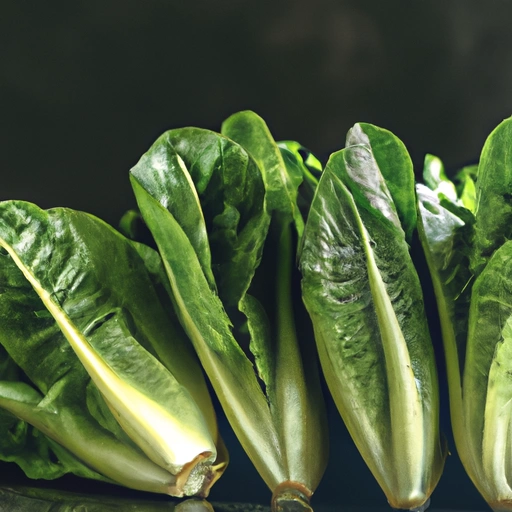Romaine Lettuce
Description

Romaine lettuce, also known as Cos lettuce, is a type of leafy green vegetable that is widely used in a variety of culinary dishes. With its crisp texture and slightly bitter taste, romaine is a popular choice for salads and other healthy recipes. It's characterized by its elongated head, sturdy leaves, and a robust central rib that provides a satisfying crunch in every bite.
Common uses
Romaine lettuce is most commonly used in salads, such as the classic Caesar salad, and as a fresh, crunchy addition to sandwiches and wraps. It can also be grilled or sautéed for a warm side dish or topping.
Nutritional value
Calories
A typical serving of romaine lettuce (1 cup or about 47g) contains approximately 8 calories (33 kilojoules).
Protein
This serving size provides about 0.6 grams (0.02 ounces) of protein.
Fat
Romaine lettuce is very low in fat, with less than 0.1 grams (less than 0.004 ounces) per serving.
Carbohydrates
It contains about 1.5 grams (0.05 ounces) of carbohydrates, primarily in the form of dietary fiber.
Vitamins
Romaine lettuce is an excellent source of vitamins A and K. A serving can provide over 100% of the Daily Value (DV) for vitamin A and about 30% of the DV for vitamin K.
Minerals
It's also a good source of minerals such as potassium and iron, with a serving containing upwards of 5% of the DV for these nutrients.
Health benefits
Romaine lettuce is associated with various health benefits, including improved digestion due to its fiber content, a boost to the immune system from its high levels of vitamin A, and support for bone health from vitamin K. The low calorie count also makes it a great food for weight management.
Potential risks
While romaine lettuce is generally safe to consume, it has been associated with outbreaks of E. coli. It's important to wash it thoroughly before consumption to minimize the risk of foodborne illness.
Common recipes
Romaine lettuce is featured in a wide array of recipes, from the iconic Caesar salad to refreshing summer salads mixed with fruits and nuts. It's also used as a leafy bed for various dishes due to its sturdy texture that holds up well under dressings and toppings.
Cooking methods
While typically eaten raw, romaine can also be grilled or quickly sautéed, which caramelizes its outer leaves and gives a sweet, smoky flavor.
Pairing with other ingredients
It pairs well with a variety of dressings, from creamy Caesar to a simple vinaigrette, and complements ingredients like chicken, anchovies, croutons, and parmesan cheese.
Summary
Romaine lettuce is a nutritious and versatile ingredient that can be used in a multitude of dishes. Whether served raw in a classic salad, grilled for a smoky flavor, or added to a sandwich for extra crunch, romaine lettuce brings both nutritional benefits and satisfying texture to a variety of recipes around the world.